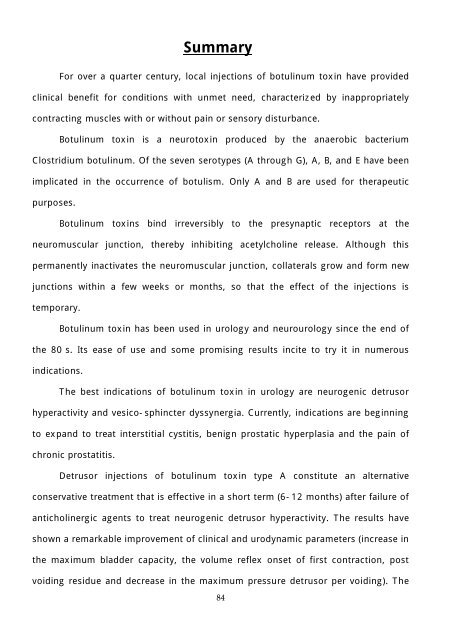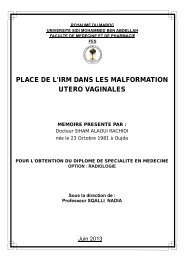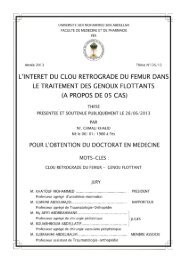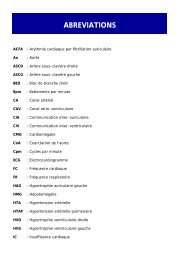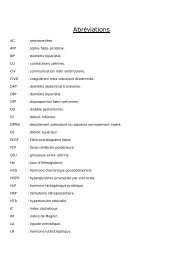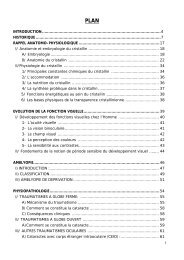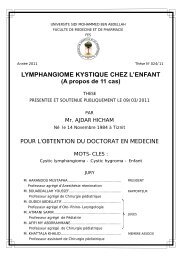Graphique 1 - Faculté de Médecine et de Pharmacie de Fès
Graphique 1 - Faculté de Médecine et de Pharmacie de Fès
Graphique 1 - Faculté de Médecine et de Pharmacie de Fès
You also want an ePaper? Increase the reach of your titles
YUMPU automatically turns print PDFs into web optimized ePapers that Google loves.
Summary<br />
For over a quarter century, local injections of botulinum toxin have provi<strong>de</strong>d<br />
clinical benefit for conditions with unm<strong>et</strong> need, characterized by inappropriately<br />
contracting muscles with or without pain or sensory disturbance.<br />
Botulinum toxin is a neurotoxin produced by the anaerobic bacterium<br />
Clostridium botulinum. Of the seven serotypes (A through G), A, B, and E have been<br />
implicated in the occurrence of botulism. Only A and B are used for therapeutic<br />
purposes.<br />
Botulinum toxins bind irreversibly to the presynaptic receptors at the<br />
neuromuscular junction, thereby inhibiting ac<strong>et</strong>ylcholine release. Although this<br />
permanently inactivates the neuromuscular junction, collaterals grow and form new<br />
junctions within a few weeks or months, so that the effect of the injections is<br />
temporary.<br />
Botulinum toxin has been used in urology and neurourology since the end of<br />
the 80 s. Its ease of use and some promising results incite to try it in numerous<br />
indications.<br />
The best indications of botulinum toxin in urology are neurogenic <strong>de</strong>trusor<br />
hyperactivity and vesico-sphincter dyssynergia. Currently, indications are beginning<br />
to expand to treat interstitial cystitis, benign prostatic hyperplasia and the pain of<br />
chronic prostatitis.<br />
D<strong>et</strong>rusor injections of botulinum toxin type A constitute an alternative<br />
conservative treatment that is effective in a short term (6-12 months) after failure of<br />
anticholinergic agents to treat neurogenic <strong>de</strong>trusor hyperactivity. The results have<br />
shown a remarkable improvement of clinical and urodynamic param<strong>et</strong>ers (increase in<br />
the maximum blad<strong>de</strong>r capacity, the volume reflex ons<strong>et</strong> of first contraction, post<br />
voiding residue and <strong>de</strong>crease in the maximum pressure <strong>de</strong>trusor per voiding). The<br />
84


